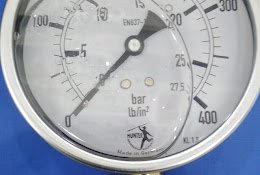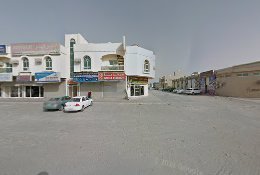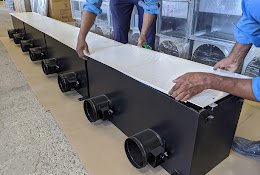Gas laws are the foundation of chemistry, engineering, and environmental science. Whether you’re a student in Lahore, a researcher in Islamabad, or part of an industrial team in Karachi, accurate gas law calculations help solve real-world problems—from designing pressure systems to analyzing environmental data. In modern science education and industry, using automated tools like an ideal gas law calculator can significantly increase precision and save time.
Understanding the Ideal Gas Law
Quick Answer: The ideal gas law formula PV = nRT relates pressure, volume, temperature, and mole quantity of gases.
The Ideal Gas Law combines Boyle’s, Charles’s, and Avogadro’s laws into one universal equation:
PV = nRT
Where:
P = Pressure (atm, Pa, or mmHg)
V = Volume (liters or cubic meters)
n = Number of moles of gas
R = Gas constant
T = Temperature in Kelvin
This equation is crucial in chemical reactions, engineering designs, and research projects. It helps professionals estimate unknown values when three other variables are known.
Importance of Accurate Gas Law Calculations
Quick Answer: Precise calculations prevent errors in labs, industries, and academic research.
Incorrect calculations can lead to:
Faulty lab results
Machinery malfunctions
Failed industrial processes
Incorrect environmental predictions
In Pakistan’s industrial regions like Faisalabad and Taxila, engineers and educational institutions use gas law applications in manufacturing, energy, and air quality management. This makes accuracy not just important—but essential.
Best Units for Gas Law Calculations
Quick Answer: Use consistent SI units to avoid calculation mistakes.
| Quantity | Standard Unit (SI) |
|---|---|
| Pressure | Pascal (Pa) or atm |
| Volume | Liters or m³ |
| Temperature | Kelvin (K) |
| Amount of gas | Mole (mol) |
Tip: Never use Celsius in gas law formulas unless converted to Kelvin.
Example:
25°C is converted to (25+273=298 K)
How to Use an Ideal Gas Law Calculator
Quick Answer: Input three known variables, and the calculator gives the fourth instantly.
Manual calculations can be time-consuming. Smart digital tools help users quickly enter values and get accurate results in seconds. These tools are widely used by:
Chemistry students
Environmental scientists
Mechanical engineers
Industrial developers
At this midpoint, here is a trusted tool to help generate precise gas law results:
Use this ideal gas law calculator for perfect results → https://needscalculator.com/chemistry-gas-law
Real-World Applications of Gas Law
Quick Answer: Gas laws are applied in daily science, engineering, and medical fields.
Applications include:
Designing airbags and pressure vessels
Measuring weather predictions
Calculating respiratory movements in medical devices
Managing refrigeration and heating systems
In Pakistan, Karachi’s industrial sector and Islamabad’s research laboratories use gas law formulas in petroleum, healthcare, and manufacturing processes.
Temperature and Pressure Effects on Gases
Quick Answer: When temperature increases, gas expands unless pressurized.
Key Concepts:
Increase in temperature leads to increased molecular motion
Higher pressure compresses gases
Safe storage depends on stable temperature conditions
Example:
When a gas-filled cylinder is heated, its pressure builds up and may become dangerous if not monitored.
Role of Technology in Gas Law Education and Industry
Quick Answer: Smart calculators and AI tools make gas law calculations faster and error-free.
In Pakistan, youth training programs under Punjab Skills Development Fund (PSDF) and National Centre for Physics Islamabad encourage digital education and smart technology adoption. Modern gas law solutions support remote learning, lab simulation, and industrial automation.
Consider platforms that provide smart solutions. You can get quick and reliable calculations using modern digital tools → https://needscalculator.com/
Supporting Innovation and Tech Growth in Pakistan
Quick Answer: Digital hubs help improve science education, research, and industry.
Pakistan is home to many rising tech ecosystems. One such hub is an innovative technology company in Pakistan, fostering research, smart tools, and entrepreneurial training → https://dhanoteitpark.pk/
These programs help students, developers, and engineers apply gas law concepts in real-world contexts.
Expert Insight
Quick Answer: Experts agree—smart tools enhance accuracy and learning.
“Manual chemistry is foundational, but modern science demands fast and accurate calculations using digital tools to ensure reliability, especially in academic and industrial research.”
— Dr. Farah Hussain, Chemistry Lecturer, National University of Sciences and Technology (NUST)
FAQs
Q1. What is the ideal gas law used for?
It is used to calculate pressure, volume, temperature, or number of moles in gases.
Q2. Can gas law calculators be used for industrial purposes?
Yes, especially in manufacturing, air quality monitoring, and energy research.
Q3. Why is temperature always converted to Kelvin?
Because Kelvin is the absolute temperature scale used in scientific equations.
Q4. What is R in the gas law formula?
R is the universal gas constant (8.314 J/mol·K).
Q5. Can I use the gas law for real gases?
Only under moderate conditions. Extreme conditions require Van der Waals equation.
Q6. Are online gas law tools reliable?
Yes, when they use verified formulas and unit conversion systems.
Q7. Which cities in Pakistan use gas law tools the most?
Lahore, Karachi, Islamabad, and Faisalabad in academic and industrial sectors.
Final Thought
As a science enthusiast from Lahore, I’ve seen how the combination of chemistry fundamentals and technology transforms learning and industry practices. From high school labs to university research centers and local tech parks, gas law calculations are no longer limited to pen-and-paper. Smart platforms, youth-focused initiatives, and innovative tools are shaping a new generation of Scientifically Equipped professionals across Pakistan. Precision, clarity, and practicality—that’s the future of gas law learning.










